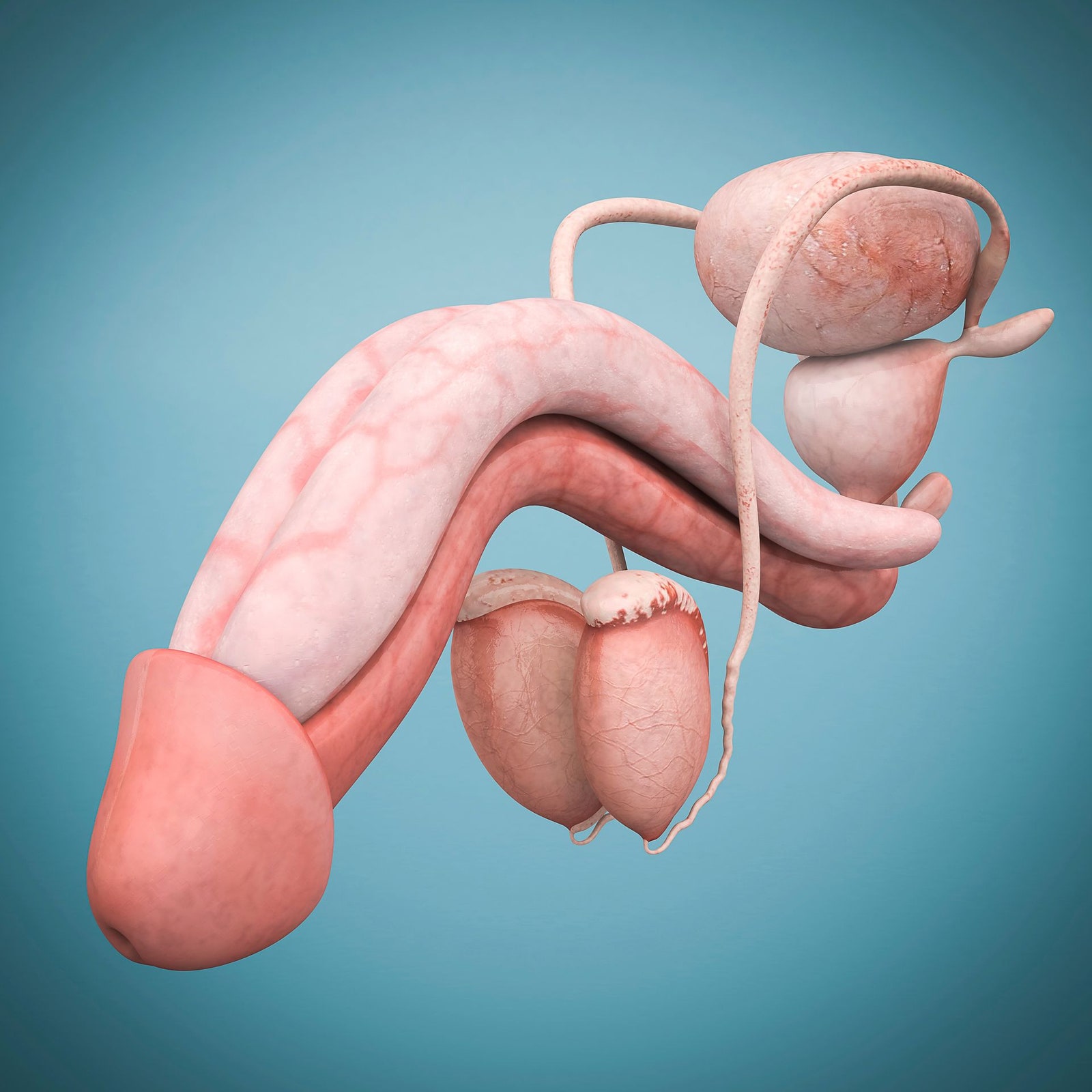The Anatomy of a Penis
The penis, an external male sexual organ, varies in size, shape, and texture. Typically composed of three main parts, it is essential to understand the overall anatomy to visualize its appearance.

The penile shaft forms the primary, elongated structure consisting of erectile tissue. Usually, the skin covering the penile shaft is relatively thin and smooth.
At the upper end of the shaft, we find the glans, also known as the head of the penis. Protected by a fold of skin called the foreskin (prepuce), the glans is sensitive and often varies in color, appearing pinkish or reddish. In individuals who have undergone circumcision, the foreskin is typically absent.
Corona is the term used to describe the rim at the base of the glans. It is often more pronounced in uncircumcised individuals.
Beneath the penile shaft lies the penile root. This hidden portion extends internally into the pelvis, connecting to various structures such as the pubic bone and suspensory ligaments.
Variations in Size and Shape
The appearance of a penis can significantly vary, particularly in terms of size and shape. The length and girth of a penis are highly individualized, with measurements ranging from a few inches up to seven or eight inches in length when erect.
Some individuals may have a straight penis, while others may have a slight curve or bend when erect. Such curvature is generally natural and typically not a cause for concern. However, severe or painful bending may be indicative of a condition known as Peyronie's disease, which requires medical attention.
Texture and Skin
The texture of a penis can vary. Some individuals may have a smooth and uniform skin texture, whereas others may have more prominent veins visible on the surface. These veins, often bluish in color, are part of the normal blood supply to the erectile tissue and are generally harmless.
Additionally, factors such as individual skin tone and hair distribution can influence the appearance of a penis. While some individuals may have minimal hair growth on their penile shaft, others may have more noticeable hair.
Conclusion
Understanding the visual aspects of a penis can help demystify common questions and concerns. While there may be natural variations in size, shape, and texture, it is essential to remember that each penis is unique. If you have any specific concerns or questions regarding your own genitalia, it is recommended to consult with a medical professional who can provide tailored advice.
Remember, body diversity is normal, and embracing our individuality is key to overall well-being.
Related FAQs about what does a penis look like
What are the main parts of a penis?
The penis consists of three main parts: the penile shaft, the glans (head), and the penile root.
Is there a standard size or shape for a penis?
No, the size and shape of a penis can vary greatly among individuals. Length and girth can differ, and some may have a straight penis while others have a slight curve.
What is the role of the foreskin?
The foreskin, or prepuce, protects the sensitive glans of the penis. In individuals who haven't undergone circumcision, the foreskin covers the glans, while it is absent in circumcised individuals.
Are visible veins on the penis normal?
Yes, visible veins on the penis are typically normal. These veins are part of the penile blood supply and are often harmless.
When should I seek medical attention regarding the appearance of my penis?
If you are experiencing severe or painful bending of the penis when erect, it is advisable to seek medical attention as it could be a sign of Peyronie's disease. Otherwise, variations in size, shape, and texture are usually natural and not cause for concern.
Glossary about what does a penis look like
1. penis: The penis is the male external sexual organ that functions in sexual reproduction. It is responsible for ejaculation, urination, and sexual pleasure.
2. penile shaft: The penile shaft refers to the elongated part of the penis that contains erectile tissue, blood vessels, and nerves. It is covered by a thin and smooth layer of skin.
3. glans: The glans, also known as the head of the penis, is the highly sensitive and rounded end. It can vary in color, appearing pinkish or reddish.
4. foreskin: The foreskin, also called the prepuce, is a fold of skin that covers and protects the glans in uncircumcised individuals.
5. corona: The corona is the rim at the base of the glans. It is more pronounced in uncircumcised individuals.
6. penile root: The penile root refers to the base of the penis that extends internally into the pelvis, connecting to structures such as the pubic bone and suspensory ligaments.
7. Peyronie's disease: Peyronie's disease is a condition characterized by an abnormal and excessive curvature of the penis during erection, often causing pain and difficulties with sexual intercourse.
8. body diversity: Body diversity refers to the natural variations in physical characteristics among individuals, including differences in size, shape, and skin texture.
9. erectile tissue: Erectile tissue is a specialized type of tissue found in the penis that fills with blood during sexual arousal, leading to an erection.
10. suspensory ligaments: The suspensory ligaments are supportive structures in the penis that attach it to the pubic bone, helping to maintain its position and angle.
